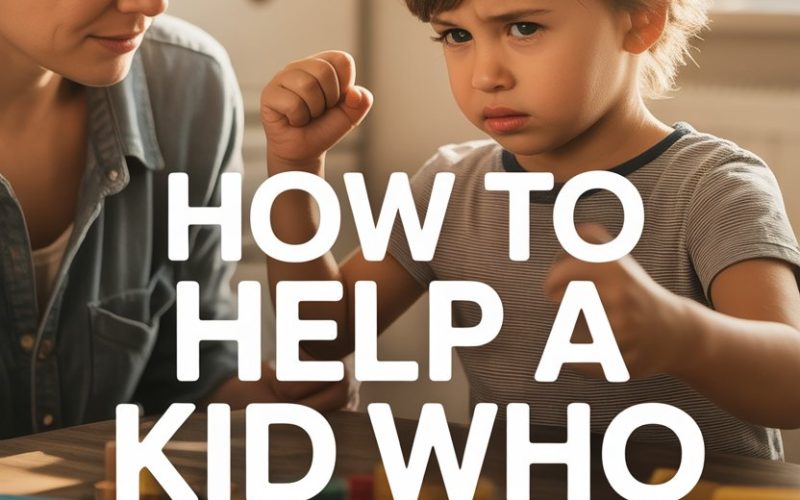Angry outbursts over seemingly “small stuff” can turn a peaceful evening into a full-on soap opera.
If your child’s fuse is shorter than your morning coffee routine, you’re not alone—and you’re not doomed to a life of tiptoeing past emotional landmines.
Kids aren’t born with adult-sized emotional toolkits, but with a bit of patience (and maybe some deep breathing on your part), you can help yours build one.
Why Some Kids Have a Shorter Fuse
Every child is wired differently, and a quick temper isn’t a sign you’ve raised a future supervillain. Genetics, temperament, sensory sensitivity, ADHD, anxiety, and even lack of sleep can all play a role in how a child manages frustration.
According to a Harvard University study, self-regulation develops through practice, not osmosis.
So that kid who flips out when their sock seam feels “wrong”? Their brain might genuinely be struggling to cope. You’re not imagining it, and they aren’t just trying to make you late for work—again.
Keep Your Cool (Even If You’re Not Feeling It)
Ever notice how a child’s meltdown can magically sync up with your own rising stress? Kids aren’t mind readers, but they are world-class mood detectors.
Matching their anger with your own tends to pour petrol on the flames.
Parents who respond with a calm, steady voice—even when their internal monologue is screaming—help children feel safer, and more likely to mirror that steadiness.
It’s not about being a saint. Step out, count to ten, or yell into a pillow if you must. Just try not to join them on the emotional rollercoaster.
Name It to Tame It
For many kids, anger is a confusing, overwhelming blob of a feeling. They might not know if they’re angry, scared, or just plain hungry (hangry, anyone?).
Help them build emotional vocabulary. You might say, “It looks like you’re really frustrated that your tower fell down.”
Over time, they’ll learn to spot the difference between “I’m mad” and “I’m disappointed” or “I’m embarrassed.”
Dan Siegel, a clinical professor of psychiatry, calls this name it to tame it. Turns out, slapping a label on big feelings helps shrink them down to size.
Empathy: Your Secret Superpower
Resist the urge to fix or dismiss. Even if you’re thinking, “Seriously, we’re crying over a crayon?”—offer empathy first.
Try, “That really upset you. I get it.” This doesn’t mean you agree or that you’ll let them hurl crayons across the kitchen, but it does mean you’re showing up for them.
Kids who feel heard are—funny enough—less likely to escalate. According to child psychologist Dr. Laura Markham, validation calms the emotional brain so logic has a fighting chance.
Teach Calming Strategies When Emotions Are Cool
In the thick of an outburst, rational conversation is about as effective as reasoning with a toddler about why they can’t have biscuits for dinner.
Instead, wait until everyone’s calm, then brainstorm together. Breathing exercises work wonders—blowing on a pinwheel, pretending to blow out birthday candles, or even “dragon breaths” for the more dramatic child.
Other kids respond well to movement: running laps, jumping on a trampoline, or pushing against a wall. Some kids like squeezing a stress ball or listening to music.
The key is practice—these techniques become second nature with repetition.
Set Clear Boundaries (With Compassion)
Empathy doesn’t mean anything goes. It’s perfectly loving to say, “It’s okay to be angry. It’s not okay to hit.”
Consistency is key. Enforce boundaries gently but firmly.
If your child loses it and starts tossing toys, remove the toys for a while. If they scream at their sibling, help them make amends after they’ve cooled off.
Dr. Ross Greene, author of The Explosive Child, reminds parents that “kids do well if they can.” Setting limits is about teaching, not punishing.
Look for Triggers
Patterns are your friend. Keep a mental (or actual) log of what sets your child off. Transitions, hunger, tiredness, sensory overload, or frustration with difficult tasks are common culprits.
You can’t avoid every tantrum-trigger, but a bit of foresight helps. Packing a snack for the school run or allowing extra time for transitions can prevent some blowups.
Trouble with transitions? Give warnings before changing activities. If noise is an issue, offer headphones. Even the smallest tweak might make all the difference.
Model Managing Your Own Frustration
No parent is perfect, and kids don’t need you to be. When you lose your cool (and you will), talk about it afterward. “I got really frustrated when we were late. Next time, I’m going to take deep breaths.”
Kids learn more from what you do than what you say. Showing how you handle anger sets the gold standard for family life.
Address Underlying Needs
Anger is often the tip of the iceberg. For younger children, it might be their only way to signal “I’m overwhelmed” or “I feel out of control.” For older kids, stress, anxiety, or social struggles can masquerade as anger.
Check basics: Are they getting enough sleep? Eating regularly? Is there a big change at home or school?
Even minor adjustments like a new classroom seating chart or a lost friendship can trigger big reactions.
Kids with neurodevelopmental conditions like ADHD or autism often have an even trickier time regulating emotions.
If you suspect something more than everyday big feelings, don’t hesitate to reach out to a paediatrician or mental health professional for advice.
Praise Effort, Not Perfection
When your child tries a calming strategy or manages a tough moment better than usual, acknowledge it. “You were so mad, but you took a break. That took a lot of effort.”
This helps kids associate self-regulation with positive attention, not just crisis management.
Praise can be as simple as a high-five, a wink, or a whispered, “You did it.” (Fancy sticker charts are strictly optional.)
Tools and Resources That Might Help
A growing array of children’s books, games, and even apps can support emotional regulation. Titles like “The Color Monster” or “Anh’s Anger” give feelings a name and a story.
Board games such as “The Floor Is Lava” can be used for “movement breaks.” Apps like Headspace for Kids offer short, kid-friendly mindfulness exercises.
If you’re worried your child’s anger isn’t typical—especially if it’s violent, destructive, or seems to come out of nowhere—consult your GP or a mental health professional.
There’s absolutely no shame in getting extra support.
You’re Not Alone in This
If you ever feel like you’re the only parent dealing with explosive outbursts, rest assured: parents everywhere have fended off dinner-table drama with nothing but a deep sigh and a mental eye-roll.
Building emotional regulation is a marathon, not a sprint—and it can feel, at times, like you’re running backwards.
But with patience, empathy, and a little creativity, you are giving your child gifts that last a lifetime: self-awareness, resilience, and the ability to say, “I’m angry, but I’ve got this.”
And on those days when nothing seems to work? Breathe.
You’re still doing an amazing job—even if the dinner is burnt and someone’s socks are already on the wrong way round.





